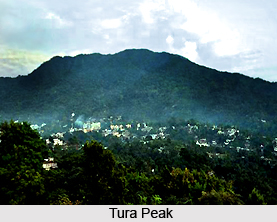 Tura is a town in the West Garo Hills district of Meghalaya. This is a major valley which is located at the foot hills of the Tura hills and Tura peak. Surrounded with evergreen hills of Meghalaya this is one of the most picturesque valleys of Meghalaya which enjoys a moderate climate throughout the year. This place is mainly known for the ancient shrine of native God Durama and a number of unexplored places which excite the tourists who visit the region.
Tura is a town in the West Garo Hills district of Meghalaya. This is a major valley which is located at the foot hills of the Tura hills and Tura peak. Surrounded with evergreen hills of Meghalaya this is one of the most picturesque valleys of Meghalaya which enjoys a moderate climate throughout the year. This place is mainly known for the ancient shrine of native God Durama and a number of unexplored places which excite the tourists who visit the region.
Location of Tura
Tura is located on the western part of Meghalaya which is closely related to the international borders of India and Bangladesh. Because of its hilly terrain the place is not connected with railways and the main mode of transport is through the roads which runs through rough terrains. Located at a distance of 220 kms from Guwahati and 323 kms from Shillong this can be easily commuted with large colours like tata sumo and local buses which make trips in 3 days a week.
Geography of Tura
Tura is located at 25degree31`N and 90degree13`E. With an average elevation of 349 metres (1145 feet) this has a moderate climate through out the year. Located at foot hills Tura hills it enjoys some of the most picturesque sites of the valley.
Demography of Tura
According to the 2001 census report of India, Tura had a population of 58,391in which Males constitute 51% of the population while the females constitute upto 49%.
Culture of Tura
Tura is mainly inhabited by the Garo Tribes. Along with them some more ethnic groups are also found in the region. Most prominent among them are the Bengalis, Nepalis, Hajongs, Koches who exist along with other ethnic groups. Christianity is the main religion of the valley which is followed by nearly 90% of population. The garo of Tura are largely baptised and has a matrilineal and matrilocal society.
Along with this they have a variety of food which are the speciality of the region. Among the traditional Garo food the most prominent is the boiled rice, different preparations of Pork, beef, chicken and dry fish. Along with this the there are some delicacies as well like Nakam Bitchi which is dry fish made with chillies and soda and Wak Pura made of Pork cooked with crushed rice.
People in Tura often celebrate some of the traditional festivals like Wangala which is celebrated after harvesting. It is a traditional Garo dance which is showcased with 100 Drums festivals that takes place annually. This often takes place in a place called Asanang which is 30 kms away from Tura. The men and women are dressed in traditional attire dancing along with the beats of 100 drums. This is one of annual festivals which is celebrated along with Christmas and Durga Puja which are equally popular in the region.
Education in Tura
In case of education Tura has a literacy level of 73%, in which male literacy is 77%, and female literacy is 70 while 14% of the population is under 6 years of age. Tura has a number of schools and colleges which are largely maintained by the state government. Among the most prominent schools there are Tura Public School, Government Boys Higher Secondary School, Government Girls` Higher Secondary School, Mothers` Union Secondary School, Little Flower Secondary School, Hawakhana Deficit Higher Secondary School, Kendriya Vidyalaya, Mt. Sinai Secondary School, Tura Town Higher Secondary School, etc. It has some of popular missionaries and a number of colleges, like, Don Bosco College, Tura Govt. College, Durama College, Tura Polytechnic,Tura College of Information Technology, Tura ICFAI College, College of Teacher Education, College of Home Science (under Central Agricultural University, Imphal).The place also has some major institutes like Central Institutes like Regional Vocational Training Institute and North Eastern Hill University, Tura Campus.
Thus with some prominent tourist spots and educational institutions this is a major township which is often visited by the tourist of India. Because of scenic beauty it often encourages the outsiders to reside in the region.






